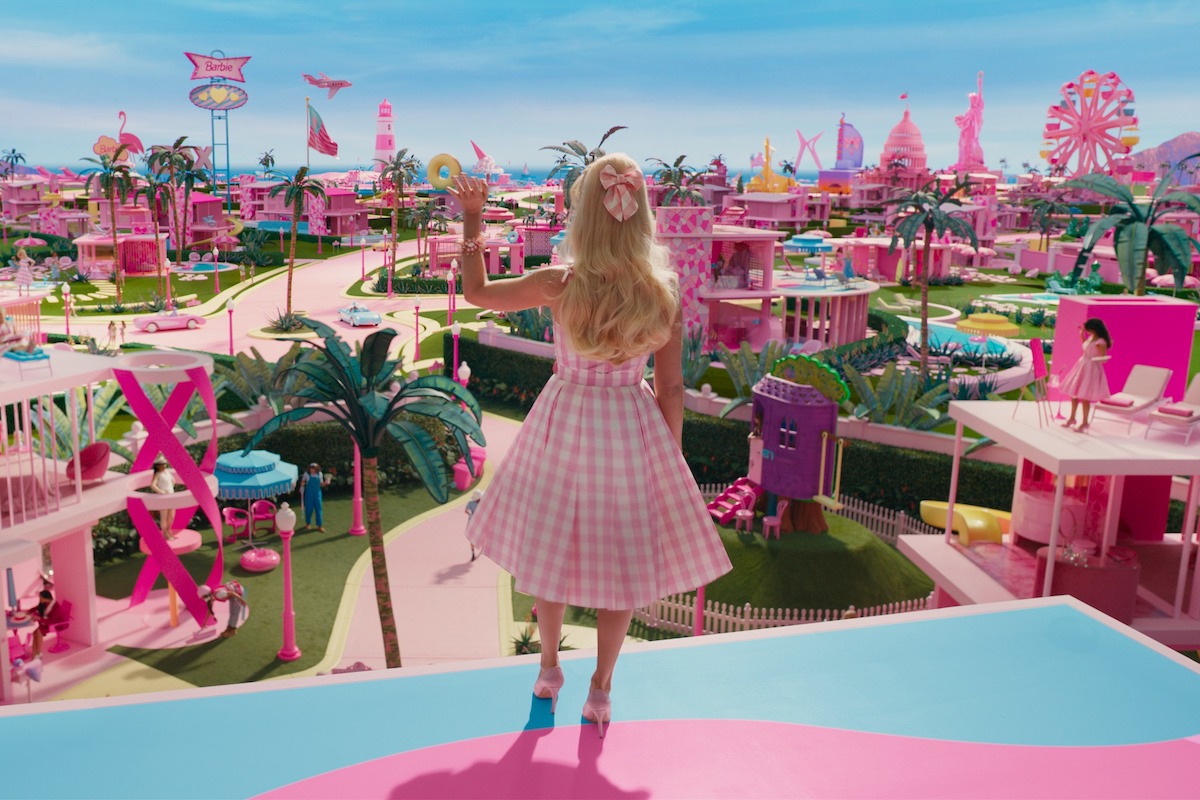Let’s Talk About ‘Barbie’s White Feminism

If you haven’t yet—or even if you have—go watch Barbie, it’s great. There’s an obscenely funny joke or witty reference every five seconds and its visual work is stunning. I genuinely can’t remember the last time I enjoyed a big-budget blockbuster film so much. And even we at The Mary Sue can’t get enough of Barbenheimer.
OK. Now that your pitchforks are lowered, let’s talk about Barbie’s white feminism.
The central conflict of the film is straightforward: Ken realizes patriarchy’s great, Ken realizes patriarchy’s bad. At the heart of the story is the idea that toxic masculinity isn’t biological, but learned behavior one can unlearn with education and empathy. It’s a great message, no doubt, and one that is at the core of feminist theory, but it feels bereft of all the turbulence that intersectionality brings.
Barbie imagines a world free of the coarse, bumpy complications that kyriarchies bring. The smooth, doll-like plasticism of its politics flattens struggle into a clean binary of men vs. women. In Barbieland, there’s no friction between different groups of women; here in this world, white women do not weaponize their whiteness against women of color, as they often do in real life. They are all united against a singular cause: Stop the Kens.
Historically, first and second-wave white feminists cast Black women out of their movements. According to NPR, Elizabeth Cady Stanton, one the most prominent suffragettes at the time, was opposed to integration with Black people and thought that Black men were the greatest threat to women’s rights. We do a great disservice to narratives of struggle by glossing over the ways in which our own supposed allies often betray us and the cause.
The film attempts to balance its white perspective through the non-white characters of Gloria (America Ferrera) and Sasha (Ariana Greenblatt), a mother and daughter duo trying to fix their own personal relationship all while helping Barbie take back Barbieland. But most of their presence is in service of pushing Barbie’s self-actualization; they exist to help prop up a white character’s story. And the rest of the non-white characters in the film are mostly set dressing.
A few jokes lampshade this whiteness, like the “white savior Barbie” jab, but it’s not enough to shake off the movie’s genuine problems with race. When it comes to female representation in movies, cis white women usually get first choice—it’s a nasty bit of politics that even Greta Gerwig, the director of Barbie, herself has fallen into. Gerwig has a history of writing mostly white stories. Lady Bird has its own troubling race politics that could fill out an entirely separate article, and Little Women doesn’t fair all that better.
Being an ally means coming to terms with problematic media that we enjoy. As we’ve covered, Barbie is currently smashing box office records. Many people are also touting the feminist virtues of the film right now. But who is this feminism for? We can enjoy the film and its messages while also noting their unfortunate superficiality. For now, I’ll be listening to that awesome soundtrack non-stop.
(featured image: Warner Bros. Pictures)
Have a tip we should know? tips@themarysue.com